Location: Eastern Canada
Brantford Power
Landfill & WWTP Cogeneration 5.4 MW
HH Angus was retained to provide a turnkey natural gas fired cogeneration plant to take in landfill gas and digester gas and, in turn, produce electricity to feed to the Ontario power grid.
The cogen plant also transfers heat back to the digesters for process treatment of municipal liquid waste. In a future phase of the project, heat would be distributed to a district energy system.
Brantford is unique in that its solid waste landfill and the municipal wastewater treatment plant (WWTP) are adjacent to each other. Based on the available methane from the WWTP and the landfill, two 2.7MWe engines were provided (5.4MWe total), with a provision for an additional set as the landfill continues to grow.
The engine hot water is 95˚C and designed to be distributed to the adjacent WWTP. The design allowed for future exhaust gas recovery when the planned district energy system was developed.
The electrical output is 42% of the energy input, and the overall efficiency of the system was designed to be 88%, assuming that full thermal recovery would be implemented in a future district energy phase.
The station service load is supplied by the utility at 347/600V; however, the power is generated at 4160V and steps up to 27.6kV to supply into the grid. Synchronization is at 4160V.
SERVICES
Prime Consultant | Mechanical Engineering | Electrical Engineering
PROJECT FEATURES
Status: Completed 2010
LOCATION
Brantford, Ontario
KEY SCOPE ELEMENTS
Prime Consultant for Design-Build | |Provided two 2.7MWe engines based on available methane | Integrated 42% of electrical output | Overall efficiency designed for 88% at implementation of full thermal recovery
York Region
Operations & Maintenance Bus Garage
The 230,000 ft2 Bus Garage in Vaughan, Ontario was retrofitted to accommodate the storage and maintenance of 230 York Region Transit (YRT) buses.
The facility was improved through a wide range of bus servicing equipment and building automation systems to minimize energy use and maximize operational efficiency. Both a new admin area and a training facility were included in the retrofit, which has been certified LEED® Silver.
The facility features state-of-the art ventilation and exhaust systems. There are two service lanes consisting of four indoor fuel pumps, vacuum stations, welding and body shop, paint booth, parts storage, tire bay, machine shop, two inspection pits, lubrication stations and two washers.
Our electrical scope included: normal and emergency power distribution design, fire alarm system design, telephone/data, communication conduit/raceway design, security system conduit/raceway design, system clock design, indoor lighting, and outdoor lighting design to meet LEED® Silver requirements.
SERVICES
Mechanical Engineering | Electrical Engineering
PROJECT FEATURES
Size: 230,000 ft2 | Status: Completed 2010
LOCATION
Vaughan, Ontario
KEY SCOPE ELEMENTS
Building automation and bus servicing equipment to improve operational efficiency | Normal and emergency power distribution | Energy-efficient system design to reduce water and energy demand | LEED Silver Certified
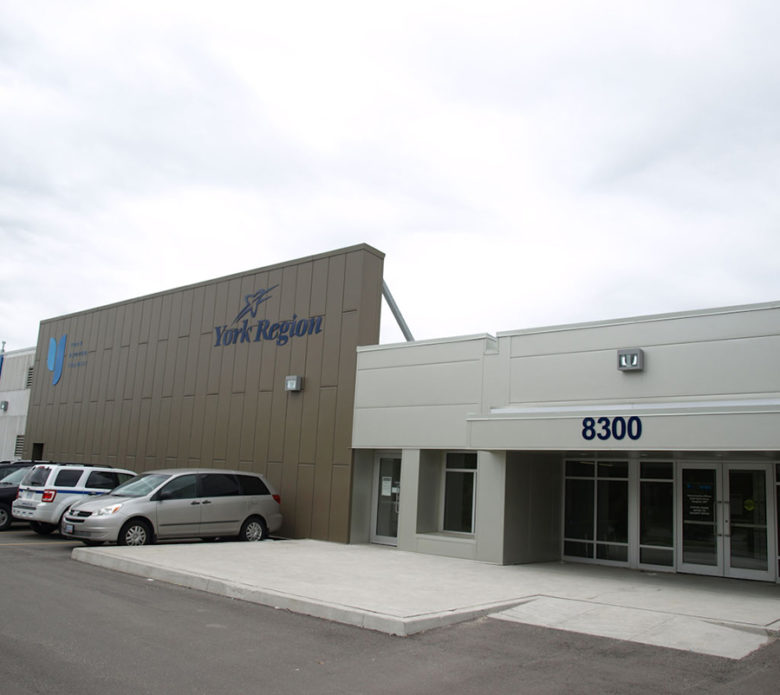
Energy efficient systems design
The building was designed to reduce energy and water demand. It includes a solar hot water system, and collection and storage of rainwater for washing buses and flushing toilets. The high efficiency HVAC system employs air-to-air heat exchange and is governed by a Building Automation System.
Best practices for environmental gains
Specifying for the light coloured roof helps reduce cooling demand in summer and mitigates the heat island effect. Interior materials and finishes were selected for the best possible indoor air quality. The construction waste diversion target was 95%. Best practices commissioning was used to ensure the building operates at optimal efficiency.
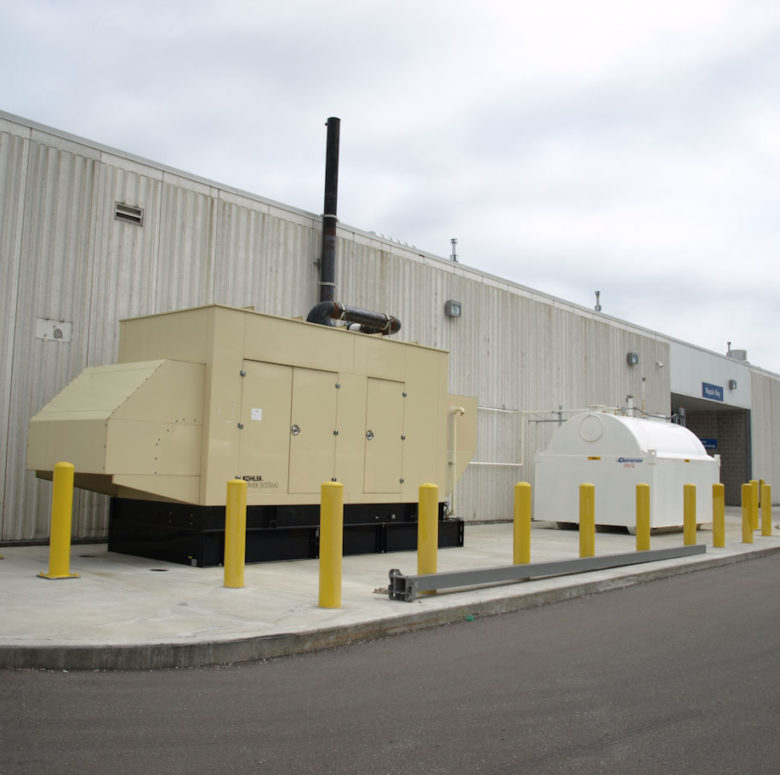
Simcoe-Muskoka Regional Cancer Centre
The Cancer Centre offers area residents a full service cancer centre “close to home”. The outpatient building was built as a 75,000 ft2 separate wing of the Royal Victoria Regional Health Centre in Barrie. Connected to the Hospital, it was designed to enable future expansion with relative ease.
HH Angus designed the new Cancer Centre, which included four Radiation Treatment Rooms (with possible expansion of four additional rooms), Patient Chemotherapy area, CT/Simulator, and all typical associated facilities. Chilled water and hot water are produced in the Cancer Centre; normal power and emergency power are obtained from the Hospital.
The Cancer Centre is three storeys, with each level planned around the patient. Level One houses Radiation Therapy, Level Two includes supportive care and outpatient clinics, and Level Three accommodates the chemotherapy and clinical trials programs.
SERVICES
Mechanical Engineering | Electrical Engineering
PROJECT FEATURES
Size: 75,000 ft2 | Status: 2010
LOCATION
Simcoe-Muskoka, Ontario
KEY SCOPE ELEMENTS
Major redevelopment expansion | Incorporated dedicated clinical trials area and support care area for patients and families | Large outpatient clinic
University of Waterloo
Humanities Chiller Plant
HH Angus provided prime consulting engineering services for mechanical, electrical and structural design, project management, and construction administration services for this new Chiller Plant at the University of Waterloo.
The installation included two new 1000 ton, low-pressure centrifugal chillers, two new 1000 ton induced draft cooling towers, associated ancillary equipment, an emergency refrigeration ventilation system, and a chiller plant control system.
The electrical design featured new electrical infrastructure to accommodate the addition of new switch gear, transformers and electrical distribution to all ancillaries.
We used Bentleys Autoplant 3D software for the mechanical piping and ventilation design to ensure the functionality of the equipment and piping layout design. We also provided our client with documentation for pre-tendering of chillers and assisted in evaluation of the tenders.
As Prime Consultant, we engaged a structural engineer to design the necessary infrastructure on the roof to support the new cooling towers.
SERVICES
Prime Consultant | Mechanical Engineering | Electrical Engineering | Contract Administration
PROJECT FEATURES
Status: Completed 2011
LOCATION
Waterloo, Ontario
KEY SCOPE ELEMENTS
Installation of two new 1000 ton low pressure centrifugal chillers | Two new 1000 ton induced draft cooling towers | Emergency refrigeration ventilation system | Structural design to support new infrastructure for cooling towers | Bentleys Autoplant 3D to ensure functionality
North Bay Regional Health Centre
The first LEED® registered healthcare facility in Canada, North Bay Regional Health Centre was built on a greenfield site and replaced two general hospitals and a separate mental health facility. HH Angus provided mechanical, electrical, vertical transportation, specialty lighting and communications design consulting engineering for the project.
The gross building area is 725,000 ft2. The facility includes the full range of departments normally found in a regional acute-care, 275-bed hospital, plus a new facility for the Northeast Mental Health Centre. The mental health portion is significant, consisting of 150,000 ft2 and 113 beds, and also includes a significant forensic component.
Using a completely innovative approach, our staff developed 100% outdoor air systems with total enthalpy heat recovery wheels, the first time this system had been implemented in North America. A major advantage of this system is that there is no re-circulated air, which greatly reduces the possibility of infection transmission for patients, staff and visitors. As well, delivering 100% fresh air rather than re-circulated air reduced the need for as many air changes in patient rooms as had previously been the norm. And that change meant that smaller fans and less ductwork were possible, resulting in lower capital cost.
As a value added service, HH Angus constructed a mock patient room to verify airflow patterns for the air distribution system. This ensured that the design was flawless. In addition, reducing air volumes to patient rooms to four changes per hour resulted in changes in the CSA standard.
The project also included:
- Planned future remote cogeneration plant
- High efficiency central heating plant with hot water and steam boilers
- Centrifugal chillers supplemented with a 24/7 chilled water system
- Radiant ceiling panels for perimeter heating
- Enhanced building envelope to achieve energy performance
- Bi-fuel emergency generators with provision for dispatch lighting
- LED lighting
SERVICES
Mechanical Engineering | Electrical Engineering | Communications Design | Lighting Design | Vertical Transportation Consulting
PROJECT FEATURES
Size: 725,000 ft2 | The first modified Alternate Finance Partnership (AFP) in Ontario | Status: Completed 2010
LOCATION North Bay, Ontario
KEY SCOPE ELEMENTS
Greenfield hospital with new mental health centre | A North American first: 100% outdoor air supply with high efficiency total enthalpy heat recovery wheels throughout the hospital, resulting in reduced risk of infection and lower capital costs | One of Canada's first LEED® registered facilities
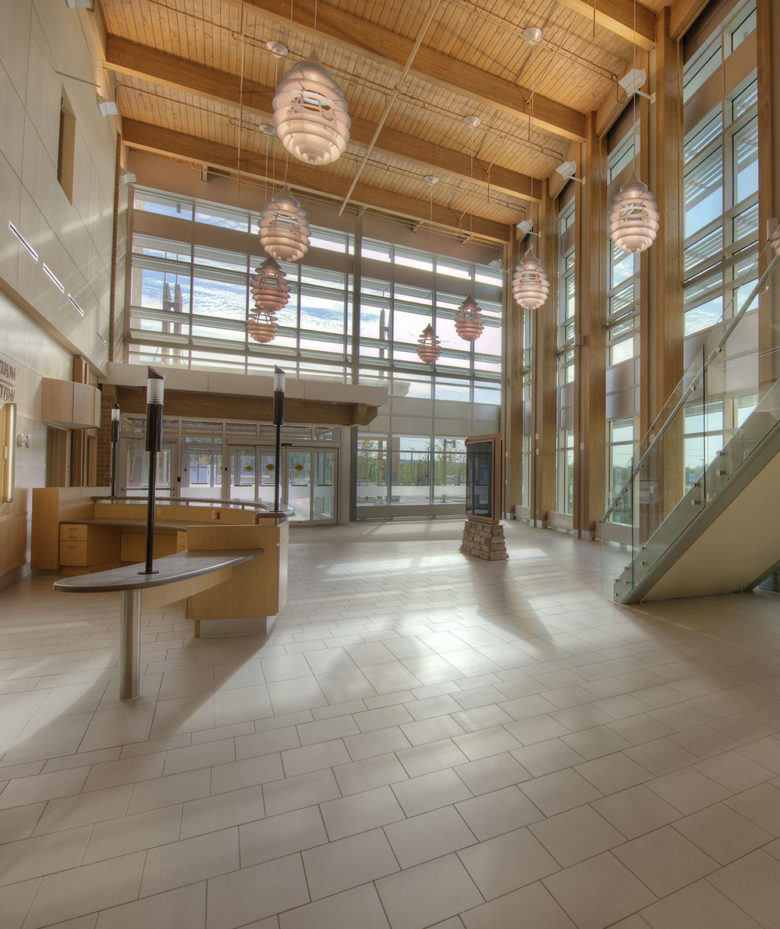
Custom electrical design
Specialized electrical systems features for the project included a centralized uninterrupted power system and an integrated communications systems platform used for all building operations and healthcare applications.
One of Canada’s first LEED® registered facilities
The main challenge with the design of this facility was performing energy modeling for LEED®. HH Angus’ design team included LEED® Accredited Professionals qualified to carry out a project that met LEED® standards for creation of an energy-efficient building.
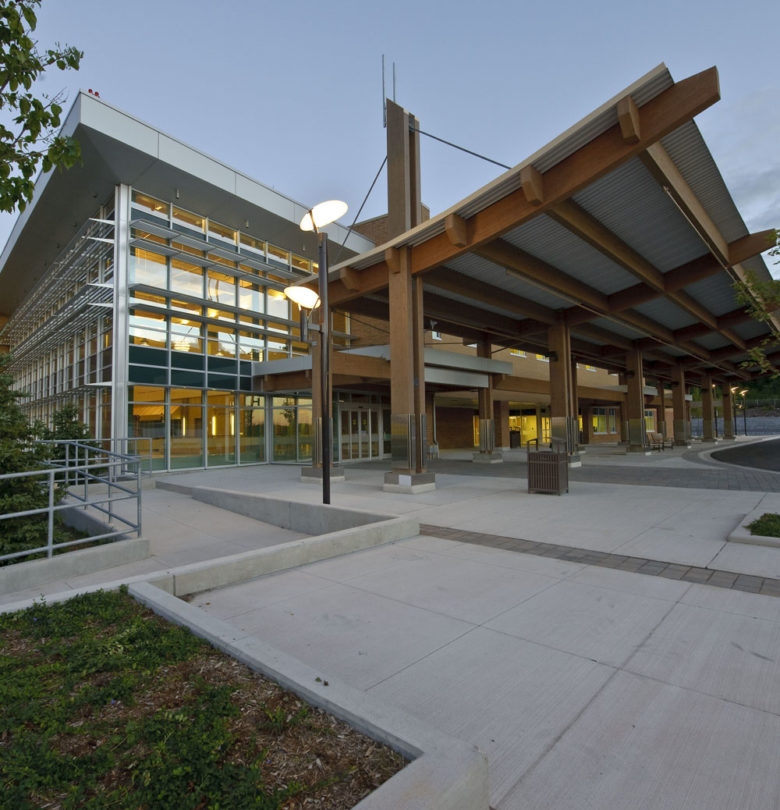
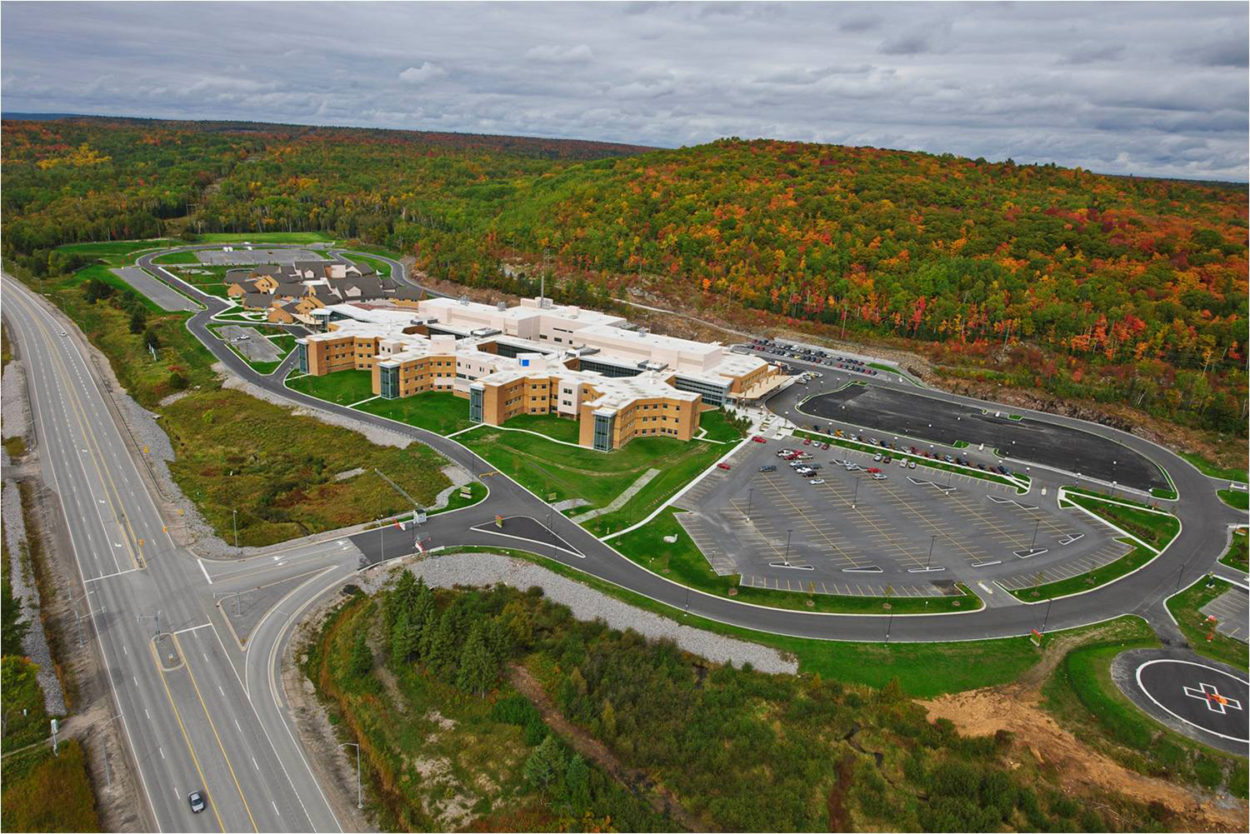
— Image courtesy of Evans Bertrand Hill Wheeler Architecture Inc.
